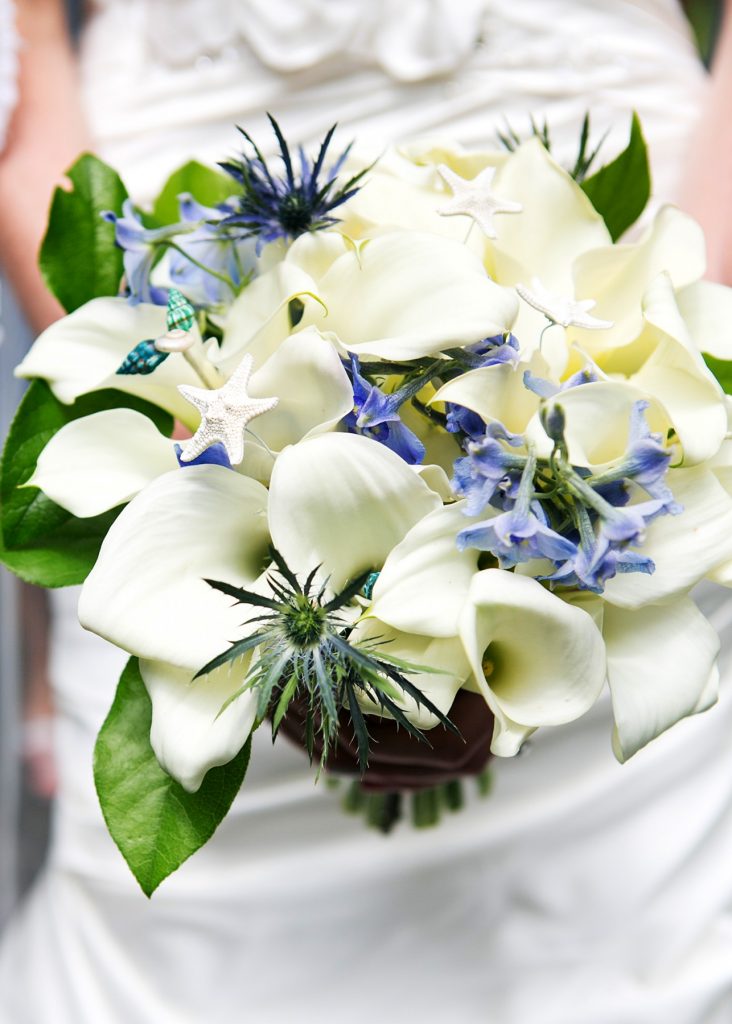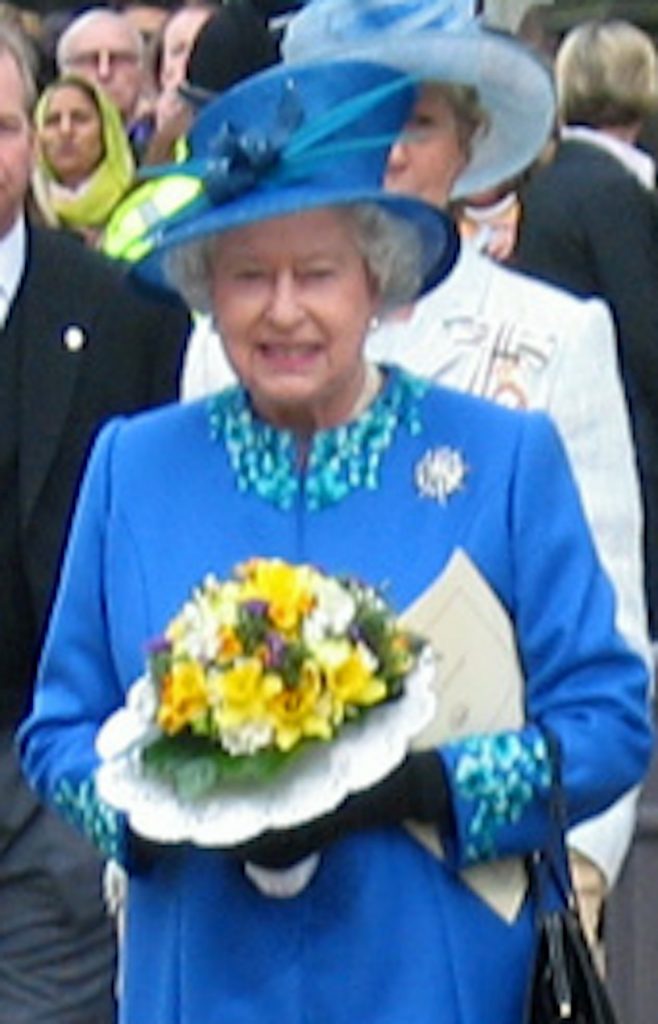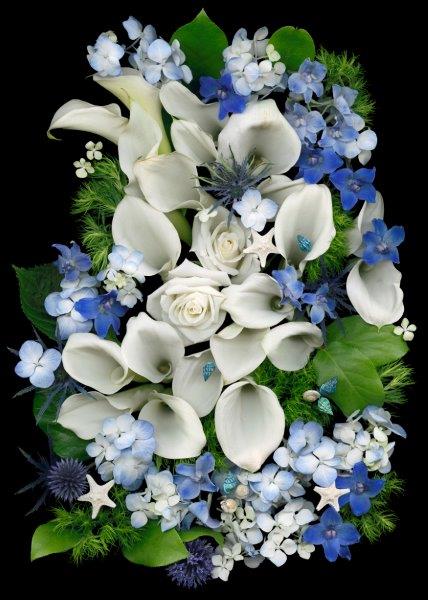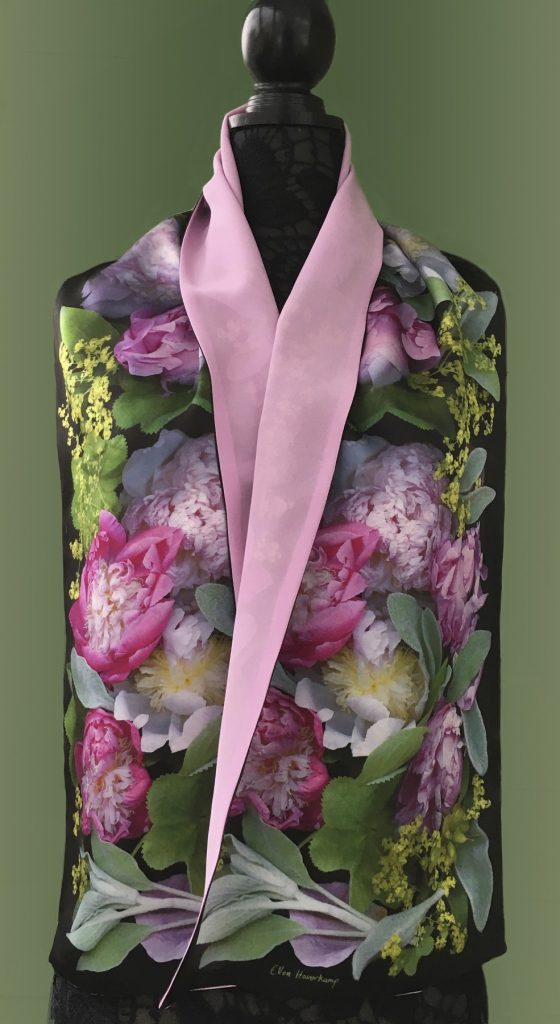Greenhouse flowers and May go together like love and marriage in June…for bridal bouquets and wedding décor. It’s a chance to push the envelope and combine traditional and modern approaches to create memorable floral moments.
You’ve heard about the wedding photographer’s stylist who grabbed up a table centerpiece for the model to hold, and with that make-do attention grabber for a designer wedding gown, started a trend for humungous bride bouquets. Some of these bunches are so big that the bride-to-be has to weight train for a couple of months just to hold the thing aloft through the ceremony. And as for the bouquet toss, forget it. A misdirected aim or fumbled catch could cause serious injury.
Thankfully, fashion’s pendulum gyrates wildly, and there are floral designers out there who can deliver fabulous without a knockout blow. Talking to Michael Russo at Trout Lily Farm, he agreed that while combining the unexpected with the much-loved familiar (artichokes among the roses anyone?) can be quite the spectacle, better to make a statement that has meaning. “It means more to make a bouquet that has some personal relevance to the bride – that emphasizes significance rather than abundance.”

For one client whose passion for oceanography opened floodgates to a sea-blue color theme, Michael also grabbed the opportunity to weave in tiny shells and starfish. “Not so many that she walked down the aisle channeling Ariel from The Little Mermaid, but touches that conveyed her life and what mattered to her in it.” So the bouquet, with a nod to the bride’s career is, indeed, abundant. But the abundance lies in the significance of the color scheme, the foam and froth of the flowers and the touches that make it personal. Size is not everything.

Modern brides tend toward keeping their bouquets as mementoes of their big day (or as alternatives to tossing a centerpiece), so tossing bouquets have re-entered the wedding ring. Russo observed that like tossing the garter the tradition had all but disappeared, so he celebrates its return, commenting, too, that in this age of inclusive diversity, “Everyone should jump for the bouquet.”
My own bouquet was a traditional tussie-mussie; a wee nosegay of herbs and simple flowers arranged in concentric rings held together by a length of ribbon and a ruffed with a lace doily. It was England, I was into old-fashioned gardens, the language of flowers and all that romantic mythology. Later, I even met the Royal Nosegay Maker, (a genuine job title, honest) who fashioned tussie-mussies for Queen Elizabeth to carry on public occasions.

The tradition started back in the less-than-sanitary 1500s (or even earlier), when the noblesse had to pass among the unwashed masses, and could sniff the nosegay for a little relief.
For my less fancy yet still meaningful tussie mussie, I picked the flowers and herbs from my own garden, but for her bouquet my daughter-in-law gathered flowers at her local Farmer’s Market. Peonies and roses were just the start of it, not surprising as she was in Monterey, California; if you can’t make it to the market, California-based Farmgirl Flowers has a consortium of growers providing them with an enormous range of greenhouse-grown beauty that they will ship all over the country.

Farmgirl is supporting some of the few remaining multi-generational flower-growing companies in the United States; at one time the majority of glasshouse-grown cut flowers we enjoyed were grown here, but international trade has overtaken that traditional home-grown industry. This may have kept prices low, but there is a cost as Deb Prinzing emphasizes through her book and website, Slow Flowers.
Floral artistry is constantly evolving and new forms of display make use of new technologies. Artist photographer, Ellen Hoverkamp, is responsible for creating a new bridal tradition using scanner photography to preserve the fresh beauty of the bouquet.

Describing her technique, Ellen writes, “I have scanned bridal flowers as a custom request for around 12 years. Mostly I use the actual bouquet with additional flowers from a table arrangement added. I disassemble and rearrange the bridal flowers on my scanner. Most bridal flowers must be suspended with wire above the scanner’s glass to avoid crushing, and assembly of a bridal composition usually takes up to three hours, then approximately two hours to retouch.”

To make a wearable memory of a special bouquet, Ellen has adapted the scanning technique to fabric printing, creating luxurious silk chameuse scarfs; the flowers are scanned, then digitally printed on the silk, and finished by Ellen who hand-dyes the lining fabric and then stitches and hems the finished scarf herself. It’s hard to imagine a more personal gift for a maid of honor, or Mother and Mother-in-law of the bride–another wedding tradition that should absolutely not be forgotten!
Save


